Barley
Barley is a cereal grain derived from the annual grass Hordeum vulgare, a common barley. It serves as…

Barley
Barley is a cereal grain derived from the annual grass Hordeum vulgare, a common barley. It serves as…
Beach Grass
Beach Grass (Calamagrostis arenaria or Ammophila arundinacea), also known as Seasand Reed and Mat Grass,…
Bearded Darnel
The Bearded Darnel (Lolium temulentum) is sometimes found in grain-fields, with its glume equalling…
Black Oat Grass
Black Oat Grass (Stipa avenacea) is found in dry, sandy woods and has no agricultural value. It grows…

Black Oat Grass
Black Oat Grass (Stipa avenacea) is found in dry, sandy woods and has no agricultural value. It grows…
Chess Grass
The Chess Grass (Bromus secalinus), also called Willard's Bromus, has a spreading, slightly drooping…
Chess Grass
The Chess Grass (Bromus secalinus), also called Willard's Bromus, has a spreading, slightly drooping…

Chess Grass
The Chess Grass (Bromus secalinus), also called Willard's Bromus, has a spreading, slightly drooping…
Chess Grass
The Chess Grass (Bromus secalinus), also called Willard's Bromus, has a spreading, slightly drooping…

Chinese Sugar Cane
The stem of Chinese Sugar Cane (Sorghum nigrum), also known as Sorgho, or Sorgho Sucre, rises from six…
Common Millet
The Common Millet (Panicum miliaceum) flowers in large, open, nodding panicles. The leaves are lance-shaped…
Couch Grass
Couch Grass (Triticum repens) is also referred to as Quitch Grass, Twitch Grass, Dog Grass, and Chandler…

Couch Grass
Couch Grass (Triticum repens) is also referred to as Quitch Grass, Twitch Grass, Dog Grass, and Chandler…
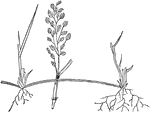
Creeping Meadow Grass
Creeping Meadow Grass (Eragrostis reptans) is found on the gravelly banks of rivers, from New England…
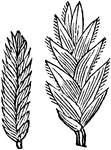
Creeping Meadow Grass
Creeping Meadow Grass (Eragrostis reptans) is found on the gravelly banks of rivers, from New England…

Creeping Meadow Grass
Creeping Meadow Grass (Eragrostis reptans) is found on the gravelly banks of rivers, from New England…

Creeping Meadow Grass
Creeping Meadow Grass (Eragrostis reptans) is found on the gravelly banks of rivers, from New England…

Creeping Meadow Grass
Creeping Meadow Grass (Eragrostis reptans) is found on the gravelly banks of rivers, from New England…

Creeping Meadow Grass
Creeping Meadow Grass (Eragrostis reptans) is found on the gravelly banks of rivers, from New England…

Creeping Soft Grass
The Creeping Soft Grass (Holcus mollis) is of no value, and is regarded as a troublesome weed. It is…
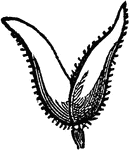
Creeping Soft Grass
Creeping Soft Grass or Creeping Velvet Grass is a species of grass, native to Europe and western Asia.
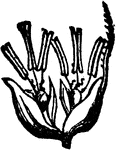
Creeping Soft Grass
It is favored by conditions in woodland clearings and at the earl stages of coppicing. Growth and flowering…
Crested Dog's Tail
The spikes of the Crested Dog's Tail Grass (Cynosurus cristatus) are simple and its spikelets awnless.…
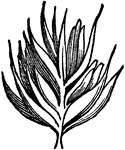
Crested Dog's Tail
The spikes of the Crested Dog's Tail Grass (Cynosurus cristatus) are simple and its spikelets awnless.…
Downy Oat Grass
The Downy Oat Grass (Trisetum pubescens) is naturalized in chalky soils and on such soils its leaves…
Finger-spiked Wood Grass
Fiinger-spiked Wood Grass (Andropogon furcatus) grows about four feet high. The leaves are smooth, the…

Finger-spiked Wood Grass
Fiinger-spiked Wood Grass (Andropogon furcatus) grows about four feet high. The leaves are smooth, the…

Finger-spiked Wood Grass
Fiinger-spiked Wood Grass (Andropogon furcatus) grows about four feet high. The leaves are smooth, the…

Finger-spiked Wood Grass
Fiinger-spiked Wood Grass (Andropogon furcatus) grows about four feet high. The leaves are smooth, the…

Fiorin Grass
Fiorin Grass (Agrostis stolonifera) is a variety of English bent. In experiments it was found to be…

Fiorin Grass
Fiorin Grass (Agrostis stolonifera) is a variety of English bent. In experiments it was found to be…
Floating Meadow Grass
Floating Meadow Grass (Glyceria fluitans), also know as Common Manna Grass, grows in very moist muddy…
Floating Meadow Grass
Floating Meadow Grass (Glyceria fluitans), also know as Common Manna Grass, grows in very moist muddy…

Fowl Meadow
Fowl Meadow Grass (Poa serotina), also called False Redtop, has two to four spikelets (shown here),…

Fowl Meadow
Fowl Meadow (Poa serotina), also called False Redtop, has two to four spikelets, sometimes five flowered.…

Fowl Meadow
Fowl Meadow (Poa serotina), also called False Redtop, has two to four spikelets, sometimes five flowered.…
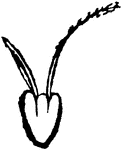
Fowl Meadow
Fowl Meadow (Poa serotina), also called False Redtop, has two to four spikelets, sometimes five flowered.…

Fowl Meadow
Fowl Meadow (Poa serotina), also called False Redtop, has two to four spikelets, sometimes five flowered.…
Goose Grass
Goose Grass (Glyceria maritima), also called Creeping Sea Meadow Grass, or Sea Spear Grass, appears…

Goose Grass
Goose Grass appears around salt marshes, growing from six to twelve inches high and having a perennial…

Hungarian Grass
Hungarian Grass (Panicum Germanicum) is an annual forage plant. It germinates readily, withstands the…
Italian Rye Grass
Italian Rye Grass (Lolium Italicum) differs from the Perennial Rye Grass in the florets having long,…

Italian Rye Grass
Italian Rye Grass (Lolium Italicum) differs from the Perennial Rye Grass in the florets having long,…

June Grass
June grass (Poa prstensis) is also known as Green Meadow grass, Common Spear Grass, Kentucky Blue grass.…

June Grass
June grass (Poa prstensis) is also known as Green Meadow grass, Common Spear Grass, Kentucky Blue grass.…
Many-flowered Darnel
The Many-flowered Darnel (Lolium multiflorum) is the most showy species of rye grass cultvated. Three…

Many-flowered Darnel
The Many-flowered Darnel (Lolium multiflorum) is the most showy species of rye grass cultvated. Three…
Meadow Brome Grass
The Meadow Brome Grass (Bromus pratensis) is a perennial weed in the corn-fields of England, and is…
Meadow Brome Grass
The Meadow Brome Grass (Bromus pratensis) is a perennial weed in the corn-fields of England, and is…
Meadow Fescue
The panicle of the Meadow Fescue (Festuca pratensis) is nearly erect, branched, close, and somewhat…

Meadow Fescue
The panicle of the Meadow Fescue (Festuca pratensis) is nearly erect, branched, close, and somewhat…
Meadow Oat Grass
Meadow Oat Grass (Avena pratensis) is a perennial grass that grows to a height of about eighteen inches.…

Meadow Oat Grass
Meadow Oat Grass (Avena pratensis) is a perennial grass that grows to a height of about eighteen inches.…

Meadow Oat Grass
Meadow Oat Grass (Avena pratensis) is a perennial grass that grows to a height of about eighteen inches.…
Meadow Soft Grass
The Meadow Soft Grass (Holcus lanatus), also referred to as Velvet Grass, has its spikelets crowded…
Meadow Soft Grass
It is a common native grass species in parts of northern Europe and is a hardy pasture grass. It is…
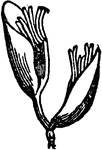
Meadow Soft Grass
Tufted or Meadow Soft grass are other oft used names and in North America it is known as Velvet Grass.

Meadow Spear Grass
Meadow Spear Grass (Glyceria nervata), also known as Nerved Manna Grass, has a broad, open panicle,…

Meadow Spear Grass
Meadow Spear Grass (Glyceria nervata), also known as Nerved Manna Grass, has a broad, open panicle,…